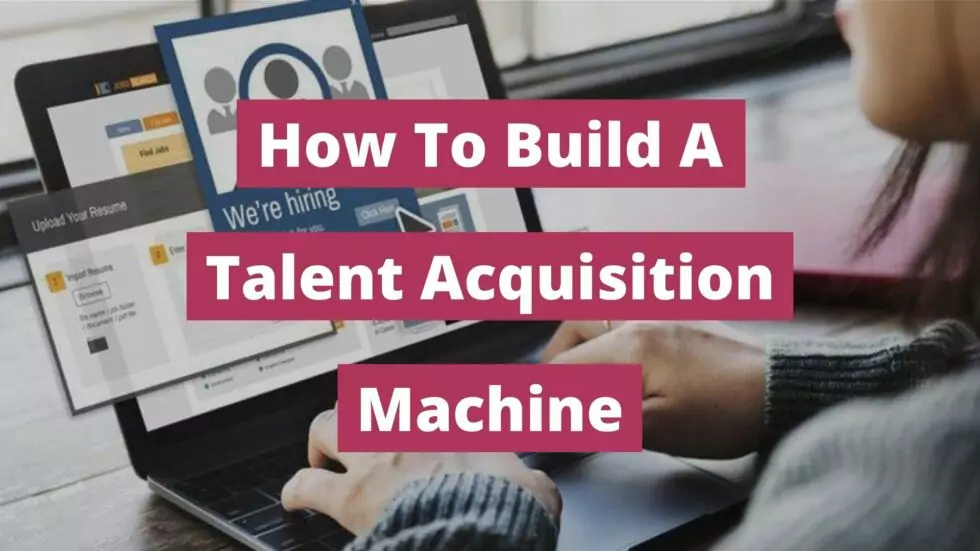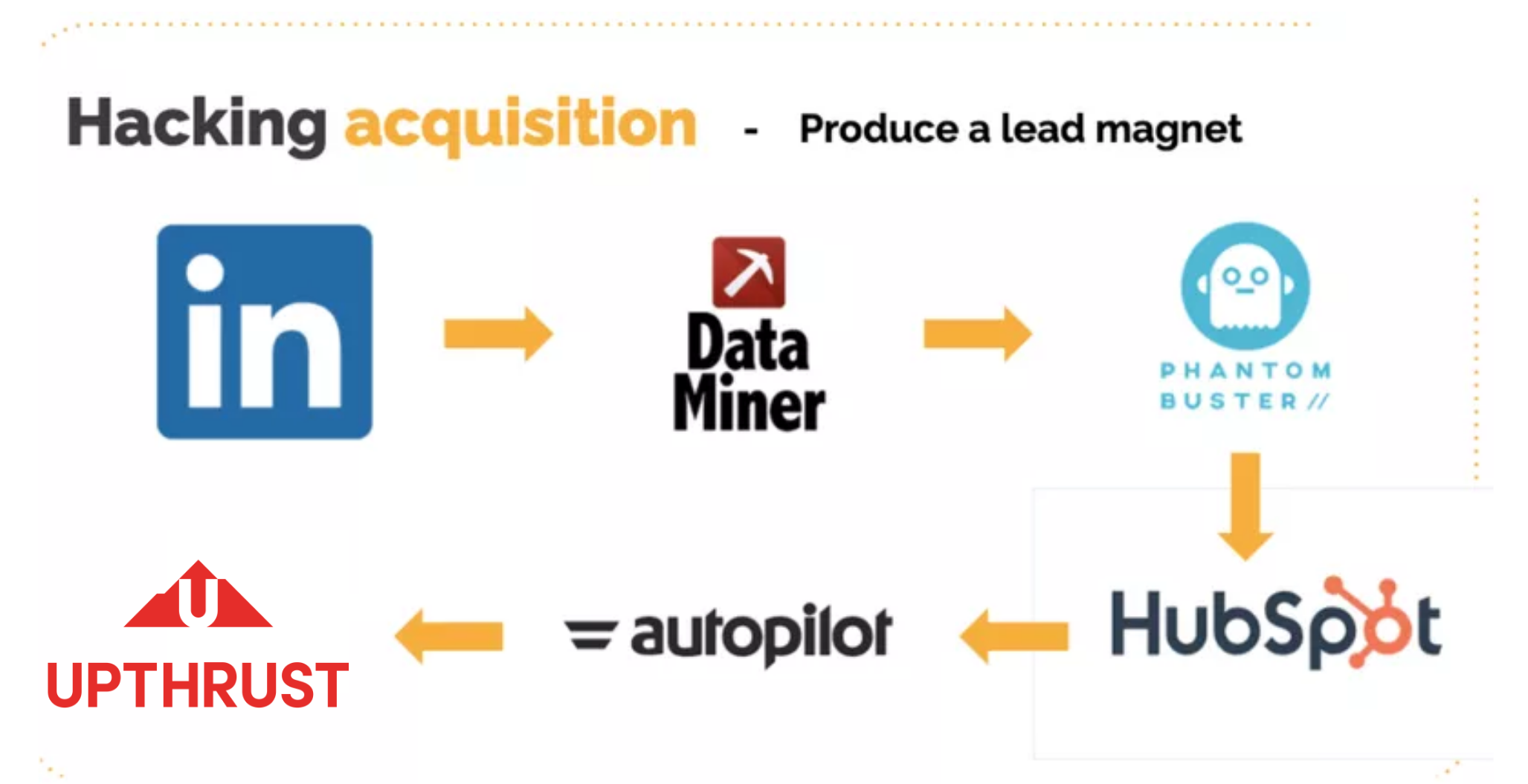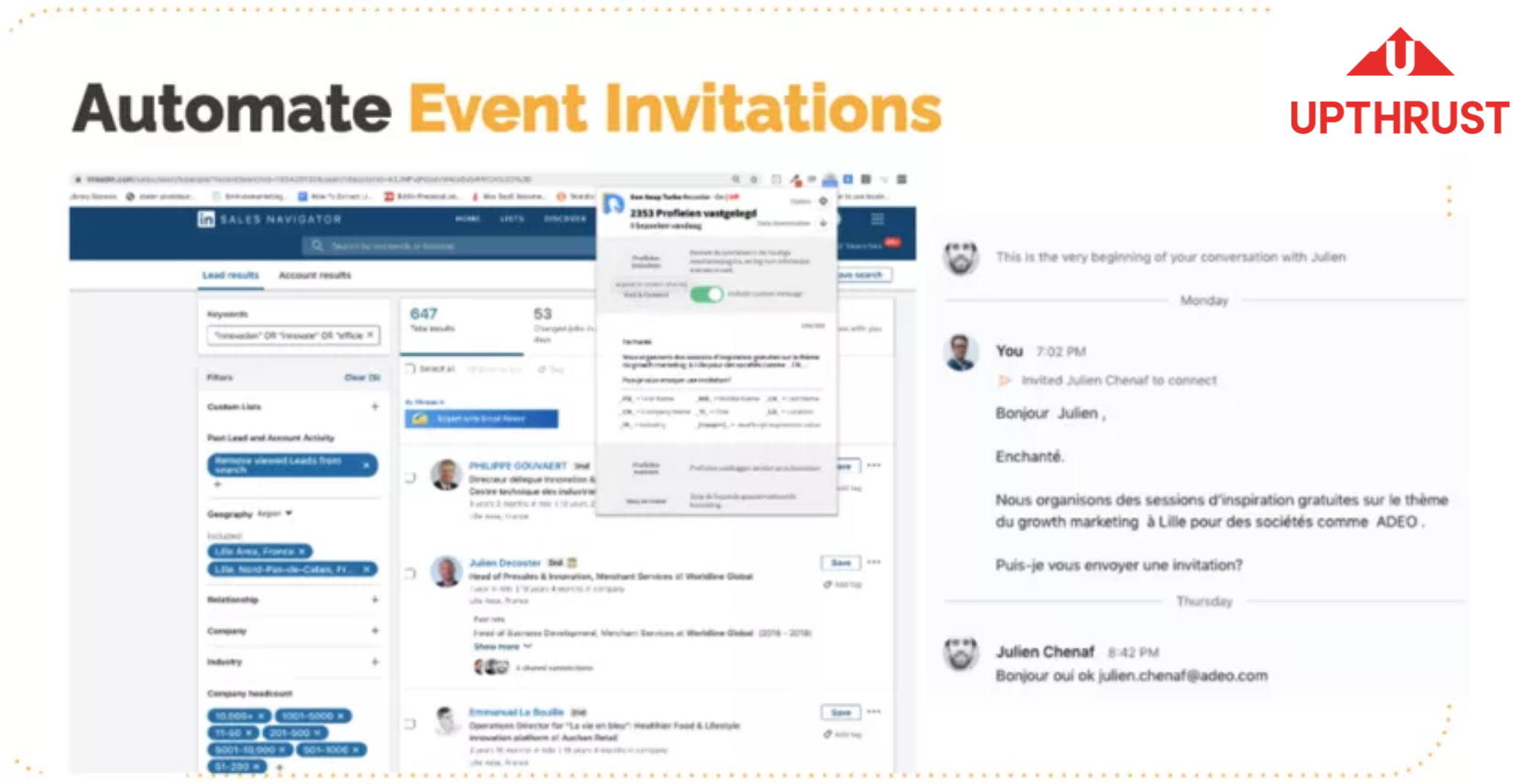What Is Talent Acquisition And How To Use It To Hire Top Talent?

If your organization is trying to achieve a long term growth plan and are looking for new employees, you must spend time on:
- Understanding what is talent acquisition,
- How you can improve your current hiring practices,
- How to be visible to the top talent of the industry,
- How to acquire new talents on autopilot with the latest talent acquisition strategies.
If you think that posting your vacancies at various job posts and having a career tab on your website will get you, employees, you are not wrong. But it is important to understand the difference between hiring employees and acquiring talent. Hiring employees will get your job done in the short term, but acquiring talent will ultimately help you accomplish your long term strategies.
This article will explain what is talent acquisition and how is it different from the traditional recruiting process. Once you understand the term talent acquisition, we will gradually get into rocket science and explain your talent acquisition best practices.
To understand the talent acquisition process, we will take you through a well-defined talent acquisition strategy (using the AAARR funnel). By the end of this article, you will have all the tools the become a talent acquisition specialist.
What is talent acquisition?
The true meaning of talent acquisition is to use Human Resources tools to identify skilled individuals and recruit them to fulfill a specific long term needs of your organization. The difference between talent acquisition and recruiting is that recruiting is simply the act of hiring new job seekers to fill up a vacancy.
Talent acquisition on the other hand is identifying talented people who have the skills and attitude to accept challenges and who would fit well with your company culture.
Even though the hiring process is the same, the different acquiring processes can make a significant impact on the type of people you may hire. This may have a significant impact on the culture and long term plans for your company.
Culture is to recruiting, as product is to marketing. -Dharmesh Shah.
We love this quote because this is how we see the process of talent acquisition. Customers are attracted to a great product. Meanwhile, talented people are attracted to a great culture. Therefore, your biggest challenge is to understand the culture of your audience.
The culture is not stable, it’s changing over time. For example, it’s harder to hire smart people from Gen-Z because sharp Z’s know how easy it is to build a digital company, and so far, they’re pretty successful with it. Because they were born into a digital environment.
Now that you understand how talent acquisition is different from recruiting, let’s understand the talent acquisition framework to arm you with the latest tactics to hire smart employees.
How to use AAARR Funnel to find and seduce the smartest talent in your industry.
Write a job description, post it on Glassdoor, LinkedIn or Indeed and wait for the perfect candidate. Or publish some Facebook ads with little to no creativity. This is what most companies do when it comes to finding their future talent. They only use the first part of the whole funnel (Talent Awareness).
As expected, they attract fewer people. Since their acquisition strategy is not different from the competitors, they become invisible among the other companies. Here you have the chance to make a difference. And it’s not hard to stand out in this boring environment. We made the plan for you.
We’ll define and show you each step of the funnel with great examples. All you have to do is to internalize the examples and interpret them for your own business.
Here is the overview of the Talent Acquisition Funnel.

As you see, this is a holistic approach. The goal is to build a machine that will:
- Bring you, new candidates. Non-stop.
- Increase the communication and conversion rate.
- Keep your candidates engaged and motivated in the process.
Sounds good? Onwards then.
Talent Awareness
The awareness stage is the base of your talent acquisition process. The rest of the steps will land on this one, so you need to build your efforts on a sturdy base. This step can be summed up in three major pillars.
#1 Finding your talent pool.
Where is your target audience hanging on the internet? It could be a niche forum, a subreddit on Reddit, a LinkedIn community or a Facebook group. Also, it doesn’t have to be online. You can find your audience in various events, seminars and summits. If you can find them in the right place and time, you’ll have more candidates to start with.
Here is an example from us:
Context: A customer wanted to hire a high-skilled software engineer.
What have we done?
Github is a popular software development platform. The audience is very active and people there like to show their geniuses by sharing ideas, codes, etc. Github is a huge forum, after some research, we found this GitAwards. A site where you can find the developers who have the most points on Github. Furthermore, you can filter them by country and city. We also found that most of the users share their personal information. This was a goldmine for our talent acquisition campaign.

#2 Making the talent know that your company exists
Here you have a huge playground to try various tactics. The job boards are the fixed option here but what else? The goal is to think outside the box, here are some ideas from us;
- Be a guest on the podcast they listen to.
- Sponsor the newsletter they’re receiving weekly.
- Host a co-webinar with people they look up to.
- Pinpoint your target audience by using LinkedIn Sales Navigator
- Host or sponsor an event (a fun and unusual one please)
If you know how to use LinkedIn Sales Navigator it could be your best weapon for talent hunt. Here is a good resource that teaches you how to use LinkedIn filters and Boolean research strategies.
After you find your target audience, you can easily extract their email addresses with smart tools like Skrapp. Or you can send them personalized and automated messages on LinkedIn with Phantombuster. You can find a step-by-step how-to guide here.
Want to brainstorm more ideas for the awareness stage? You can ask your questions or share your thoughts with David in a 30-min discovery call. Or you can email David at david@grow-force.com
#3 Finding a message that stands out in the competition.
95% of companies communicate like robots. But we already have robots for that. People want to see some personality. Most companies send out messages to the 3% candidates that are ready to switch immediately. But what about the other 97% that have never heard about you (don’t know your company and thus have no trust in it) or that are doubting about their current employer? Show your personality, do unusual things, be funny! Smart people are hungry to see these kinds of things. If you do something they don’t see every day, your message will shine and attract talented people. A good example is Sodastream manifesto video
Now to the next stage in the funnel.
Talent Data Acquisition.
To get in touch with, and nurture the candidates through the funnel, we need some details. The traditional Human Resources practices are to post jobs on job boards and have a careers tab with vacancies. These are must-haves but what is more? Here are some examples that could help you create some ideas.
Example 1 – LinkedIn Lead Magnet campaign:
You can create a content piece that your audience loves and give it for free in exchange for their information. These are the three steps you need to take:
- Create a lead magnet.
- Post it on the right medium and ask your audience to comment in exchange for the lead magnet.
- Send your landing page to the people who commented on your post.
Here is a screenshot from our last campaign:

This lead magnet was downloaded 711 times with a conversion rate of 54.9% and zero budget.
Of course, all this process was automated with the marketing automation tools, here is what the flow looks like:

I know what you’re thinking. This was not something we do solely for the talent acquisition, we can still have over dozens of candidates from this campaign. Super targeted. You can check the complete guide of this campaign from here.
Now, imagine you’ve done it for topics like: “What it looks and feels like to work in X profession.” Or “What are the standards in 2020 for new employees in the Y industry”.
If you create this whitepaper or eBook, we’re pretty sure there will be demand. You can hook it to your job advert, publish FB ads, share on forums and so on. And you’ll see, it’ll acquire many applications for your company.
Example 2 – Automated event acquisition.
Remember, we mentioned hosting some interesting events in the awareness stage. The follow-up question to this could be something like this: “Ok, now we have an event, but we don’t have any participants, what should we do?”
Here is our approach:
You can send automated invitations to the people on your LinkedIn or any platform. Apply this effective strategy by using the LinkedIn Sales Navigator with Duxsoup or Phantombuster.
Here is the blueprint step by step:
- Find your talent with LinkedIn Sales Navigator.
- Scrape the results with Duxsoup or Phantombuster.
- Send a personalized message to the people in the list and invite them to your event.

Example 3 – Chatbot and Facebook Messenger Bot
Adding a job application option to your chatbot is always a smart way to acquire surprise candidates. You don’t have anything to lose but you can win big with this strategy once you set it.
On the other hand, with Facebook Messenger Bots, you can create engaging campaigns like quizzes.
For example, we’ve done a quiz with Crimibox, themed “Which detective is hidden inside you?”

You could easily make a quiz like “What kind of manager are you?” and in the end, show your application.
Example 4 – This is the second part of our Github campaign.
After the first step, all we had to do was extract the database using Phantombuster and create an automated outreach campaign with a smart emailing tool like lemlist or Autopilot.

Talent Activation
Now you have their details, what’s next?
Typically, in this process, candidates wait forever for the company to get in touch with them. Most of the candidates even complain about this stage because they’ve never got in touch with them. The goal of this stage is to WOW your potential candidates with a warm welcome. It’s vital to show them you care and that the process has already started.
Here is a marketing automation workflow we frequently use to WOW our candidates and prospects:
WOW Activation Flow
Now somehow, you collected the data from your applicants in the earlier step. We’ll use our imaginary event as an example here.
From the application, we already have our candidates’ first name and last name.

Now we’ll use Zapier and Google Docs to generate a list automagically. This list will continue to update itself as the new applications come. Your doc will look like this:

Then, by using the same Google Doc’s URL, we’ll use the following Phantombuster features, LinkedIn Profile URL Finder: To find the LinkedIn profile of the candidates on your excel sheet.
And then we’ll use LinkedIn Network Booster: To add them on LinkedIn and send personalized messages about their application.

So the moment the top talent apply for your position, they’ll receive a LinkedIn connection request with a nice welcome message. Here is what the full workflow looks like. If you have questions about the funnel or the workflow, you can ask them, David, for free.

Talent Process Retention
Let’s say you have one more week to see the candidate face to face. One week is a long term. In this process, the top talent might have other opportunities or activities. Our goal in this stage is to keep the top talent enthusiastic and informed. What can you do to make this gap as engaging as possible?
We have an idea. An automated nurture mail flow.
You can use any smart email tool, like Autopilot. It has a drag & drop builder and makes it easy to create complicated nurture flow in minutes.

How do we use it?
We write a set of emails that engages with candidates parallel to their behavior. Let’s make it clear with some examples:
Email 1
Hey <Fname>,
Before our meeting, I wanted to send you some things you might like. The company culture is very important for me because we’re living in the office for ⅓ of our day. Yeah, this is the reality.
So we’re trying to make things as fun as possible. You can check our “a day in office” article to see what is happening inside these walls.
Also, I made a list for you. If you want, you can check out these resources to see what we’re doing and how we’re doing 🙂
Tell me if you have any questions.
See you next week.
—–
With Autopilot, you can choose to send the second mail to candidates who opened the first one. The goal is to make sure you’ll have an enthusiastic talent for the meeting day!
Email 2
Hey <Fname>,
How are you? I wanted to say hi and give you a sneak peek of our office before you arrive.
I don’t know if you have already seen our Instagram but we’re quite active. You can check it to see what it is like to work here.
If you have any questions, just reply to this email!
See you next week.
As you see, you can design these drafts yourself and use it for your open positions.
Now, to the last step of the funnel.
Talent Referral
88% of companies rated talent referrals above all other sources for the generated quality of new talent acquisition. And 82% said it gave the best return on Human Resources investment. This is huge. Finding smart and talented people is not easy, but once you find them, you also get access to their smart network. And if you could create a good referral strategy, you can create a buy one, get one free situation.
Why?
- You’re saving a lot of money. You’ll be spending time and money on the talent acquisition process. When you have a referral hire, you can spend all these resources somewhere else to grow your business.
- Referred employees stay longer.
A study of 91,000 employees across 50 employers found that referred talent stays at their new company 70% longer (iCMIS). So the recruitment costs will automatically decrease.
How can you incentivize your employees to bring their talented friends?
We have four main points,
- Incentives: Cash or non-cash such as extra holidays, personal development premiums or a simple thank you.
- Ease of use: Try to make it as easy as possible for your employees.
- Feedback: They referred to their friend and then what? How is the process going? Did the candidate move forward? Let them know.
- Recognition: Praise them for the contribution to the company culture. They’re helping you to build acquisition teams.
The best way to get referrals is to ask your new talent if they know anyone else who could be a good fit. Host recruitment happy-hours and ask your employees to bring the potential candidates.
Whatever you do, let your network know that you have a referral program, like Bolt Energie.

As you see, they’re doing it very well with the copy and by showing their team.
This was the finish line, you made it to the end of the funnel!
We hope you now have a better idea about talent acquisition and learned how to use the AAARR funnel. Just follow these practices and take inspiration from the examples and adapt them to your business to become talent acquisition specialists.
